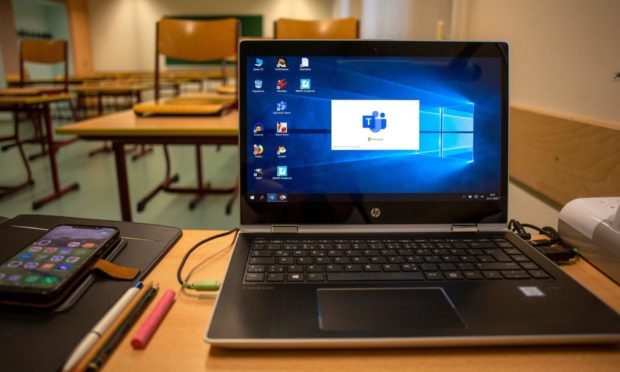New guidance has been published aimed at helping teachers and families across Scotland provide remote learning during the current lockdown.
Education Scotland, a Scottish Government agency tasked with improving the quality of the country’s education system, has worked in partnership with the education recovery group to produce the information for teachers and families.
The guidance sets out “shared understanding and expectations” of what remote learning means for schools and settings across Scotland.
It comes as the education secretary, John Swinney announced that school inspectors in Scotland are to start assessing the quality of remote learning.
This will involve “a programme of national overviews” and will commence immediately, running for the duration of remote learning.
What is remote learning?
The guidance states that “remote learning involves a combination of ‘live’ interactions between teacher and learners, and also learning which takes place away from the direct presence of the class teacher”.
This can involve a range of learning experiences which take place in a variety of learning spaces, including outdoors and includes active and physical learning.
Learning may include activities such as research tasks, project work, practical opportunities, discussions.”
Education Scotland guidance
Although digital and online approaches will be the most common method in teaching pupils remotely, the guidance states that “reading, doing, creating and inventing, playing, problem solving, observing and investigating” are among the best examples of teaching children at home.
The key principles of remote learning are the same as in-class teaching, which includes provision of learning activities to ensure engagement for all for those pupils who require additional support for learning.
How long should pupils be online?
The guidance recommends that pupils should not engage in online learning for the entirety of the school day.
Instead, learning may include activities such as research tasks, project work, practical opportunities, discussions and other activities that can be carried out away from a digital device.
The guidance states: “Remote learning can be delivered in a variety of ways.
“It may include reading, doing, creating and inventing, playing, problem solving, observing and investigating with some of the best learning examples not requiring technology at all, although in the current context, digital and online approaches will be commonly used.”
What are pupils entitled to?
The guidance outlines a number of recommendations for teachers to adhere to so that home learning is as productive as possible.
The recommendations are as follows:
- Learning opportunities which reflect the principles of Curriculum for Excellence
- Access to appropriate physical resources where needed
- Online resources that will be consistently used across learning to aid interaction, assessment and feedback
- Regular high quality interactive learning and teaching
- A balance of live learning and independent activity
- Ongoing dialogue, reflection and feedback with practitioners in relation to their own learning
- Daily registration or check in for every learner, recognising that the format for this may vary depending on the age and stage of learners
- Regular opportunities for engagement with other pupils to support learning, as well as informal engagement
- Due regard for their well-being and safeguarding
What about parents and carers?
The Education Scotland guidance stresses that parents and carers are not expected to become educators during this period of home learning.
The guidance reads: “It is important to stress that, in a period of remote learning, parents and carers are not expected to be teachers and we understand that many will be juggling work and childcare.
“It is crucial that parents and carers are as certain as they can be about what remote learning is, what it means for their children and how they can continue to contribute positively and effectively to their children’s learning.
“Good communication between home and school is essential. Parents and carers should receive information from the local authority and school regarding the plans they are putting in place, including access to online learning so they and their children know what to expect.”
What support is available?
Education Scotland has curated into a single list all the support that is available on remote learning from national organisations.
You can access the list of support using this link.










